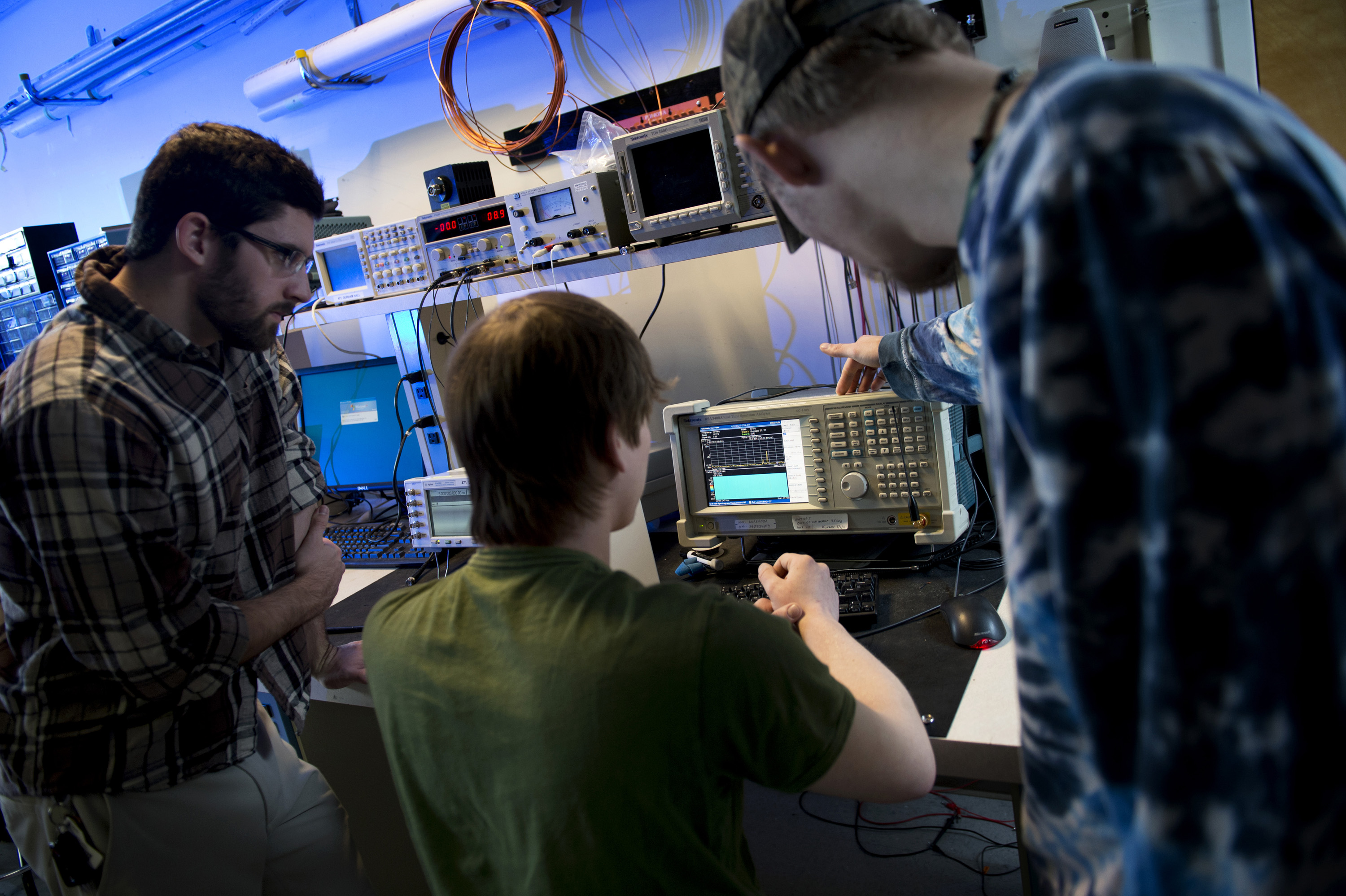Electrical engineering student teams qualify for international competition

Two student teams from Virginia Tech's electrical and computer engineering program have qualified among the 15 finalists in an international competition to develop strategies for clear communication in spite of interfering signals on a radio channel.
Teams from the Hume Center and Wireless@VT placed 9th and 11th, respectively, out of 90 competitors in the DARPA Spectrum Challenge qualification round. Virginia Tech is the only university with two teams as finalists. They will compete with 13 other teams for the $25,000 in top prizes in the preliminary challenge in September and $50,000 in top prizes in the final challenge next March.
In addition to the finalist teams, a team from the VT-MENA (Virginia Tech Middle East and North Africa) program qualified as one of 24 teams eligible to compete for three wildcard slots.
The DARPA Spectrum Challenge was organized in response to the problem of growing interference among wireless devices that function in an increasingly congested radio spectrum. While such disruption is merely a nuisance for most users of wireless technologies -- taking the form of poor cell phone reception or a slow Internet connection -- radio interference can lead to serious consequences during emergencies and other critical situations that demand reliable wireless communications devices.
"The Spectrum Challenge is focused on developing new techniques for assured communications in dynamic environments -- a necessity for military and first responder missions," said Yiftach Eisenberg, DARPA program manager, when announcing the challenge in December.
The challenge tasks teams with generating software-defined radio protocols that transmit data quickly and accurately in spite of interfering signals. Since all teams must use the same hardware, the focus of the Spectrum Challenge is the strategic development of radio algorithms and protocols.
To qualify for the challenge, teams had to complete three tasks relating to software-defined radios and GNU software development during a three-week period. They were judged on the number of bytes correctly received in five minutes once packet transfers were initiated.
Both the preliminary and final tournaments will have two challenges: one competitive and one cooperative. The competitive portion will score teams individually based on their ability to transfer data more quickly than other teams, while the cooperative portion requires teams to work together to share the spectrum most efficiently.
The VT-Hume team is advised by Charles Clancy, associate professor of electrical and computer engineering and director of the Virginia Tech Hume Center, of Arlington, Va.; Robert McGwier, director of research, Virginia Tech Hume Center; and Jung-Min Park, associate professor of electrical and computer engineering. Members include
- Daniel DePoy of Baltimore, Md.;
- Joseph Gaeddert of Georgetown, Ky.;
- Mitch Davis of Christiansburg, Va.;
- Zach Leffke of Fairlawn, Va.;
- Chris Jennette of Virginia Beach, Va.;
- Marc Lerch of Christiansburg, Va.;
- Michael Fowler, of Roanoke, Va.;
- Kris Dixon of Fairbanks, Alaska; and
- Matt Carrick, of Gainesville, Va.
The Wireless@VT team, called VT CogRad, is advised by Michael Buehrer, professor of electrical and computer engineering, of Blacksburg, Va., and members include
- Jeff Poston of Reston, Va.;
- Jason Snyder of Hamilton, N.J.;
- Dhiraj Amuru, of Hyderabad, India;
- Daniel Jakubisin of Charlotte, N.C.; and
- Vireshwar Kumar of Muzaffarpur, Bihar, India.
The VT-MENA team, called VT-MENA Beacon, is advised by Sedki Riad, professor of electrical and computer engineering, with Mustafa Nainay of VT-MENA and Alexandria University, Egypt, Khaled Harras of Carnegie Mellon Qatar, Moustafa Youssef of EJUST and Alexandria University. Students on the team include Mohamed Ibrahim, Mohammed Karmoose, Karim Habak, Karim Banawan, Ahmed Elbagoury, Yahya Ezzeldin, and Ahmed Saeed, all of Egypt.
Written by Eileen Baumann.




